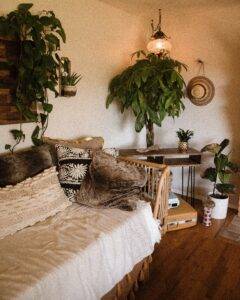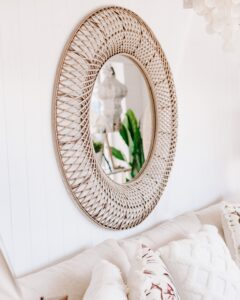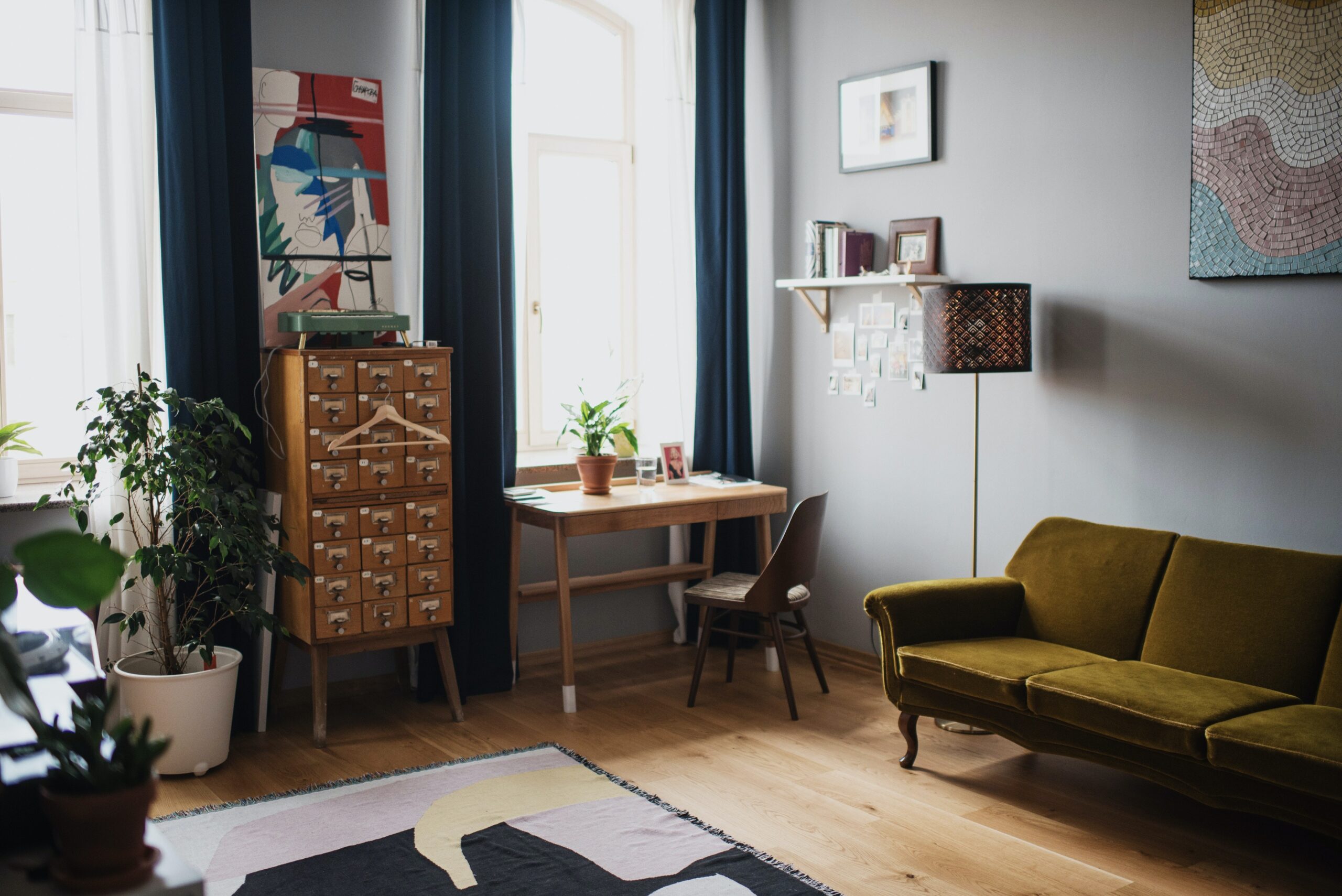Living Room Furniture for Small Spaces: How to Make Your Home Look Bigger and Better
Do you live in a small apartment or a cozy house with limited space? Do you struggle to find living room furniture for small spaces that fits your style and budget? And do you wish you could make your living room look bigger and better without sacrificing comfort and functionality? If you answered yes to any of these questions, then this article is for you.
In this article, we will share with you some tips and tricks on how to choose living room furniture for small spaces that can transform your home into a spacious and stylish oasis. We will also show you some examples of living room furniture for small spaces that you can buy online or in stores near you. Whether you are looking for sofas, chairs, tables, shelves, or accessories, we have got you covered.
Here are the main points we will cover in this article:
- Why living room furniture for small spaces is important
- How to measure your living room space and plan your layout
- How to choose living room furniture for small spaces that suits your needs and preferences
- How to arrange living room furniture for small spaces to create an illusion of space
- How to decorate your living room with accessories that enhance your space
- Where to buy living room furniture for small spaces that is affordable and high-quality
By the end of this article, you will have a clear idea of how to make your living room look bigger and better with living room furniture for small spaces. You will also have some inspiration and resources to help you find the perfect pieces for your home. So, let’s get started!

Why Living Room Furniture for Small Spaces is Important
The living room is one of the most important rooms in your home. It is where you spend most of your time relaxing, entertaining, working, or enjoying your hobbies. It is also where you welcome your guests and make an impression on them. Therefore, it is essential that your living room reflects your personality, style, and taste.
However, if you live in a small space, you might face some challenges when it comes to furnishing your living room. You might have limited options when it comes to size, shape, color, or design of living room furniture for small spaces. You might also have difficulty finding pieces that match your existing decor or theme. Moreover, you might have trouble fitting everything you need or want in your living room without making it look cramped or cluttered.
That is why living room furniture for small spaces is important. It can help you overcome these challenges and make your living room look bigger and better than it actually is. Living room furniture for small spaces is specially designed to fit in small areas without compromising on comfort, functionality, or aesthetics. It can also help you create a sense of space by using clever tricks such as color, shape, texture, or lighting.
Living room furniture for small spaces can make a huge difference in how you feel about your home. It can make your living room more inviting, cozy, elegant, or modern depending on your choice of pieces. It can also make your living room more versatile, as you can use it for different purposes such as working, studying, dining, or sleeping. Living room furniture for small spaces can also save you money, as you can buy fewer pieces that serve multiple functions.

How to Measure Your Living Room Space and Plan Your Layout
Before you start shopping for living room furniture for small spaces, you need to measure your living room space and plan your layout. This will help you avoid buying pieces that are too big or too small for your space, or that do not fit well with your existing furniture. It will also help you optimize your space and make it more functional and comfortable.
Here are some steps to follow when measuring your living room space and planning your layout:
- Use a tape measure to measure the length and width of your living room. You can also use a floor plan app or a graph paper to draw a scale model of your living room.
- Mark the locations of doors, windows, outlets, switches, vents, radiators, fireplaces, or any other features that might affect your furniture placement.
- Measure the dimensions of your existing furniture, such as sofas, chairs, tables, shelves, or cabinets. You can also use a furniture app or a website to find the dimensions of the pieces you want to buy.
- Decide on the focal point of your living room. This is the element that draws the most attention and sets the tone for your space. It could be a TV, a fireplace, a window, a painting, or anything else that you want to highlight.
- Arrange your furniture around the focal point, leaving enough space for traffic flow and movement. You can use painter’s tape or cardboard cutouts to mark the positions of your furniture on the floor. You can also use a virtual reality app or a website to visualize how your furniture will look in your space.
- Experiment with different layouts until you find one that works best for your space and needs. You can use online tools such as [RoomSketcher] or [Planner 5D] to create and compare different layouts.

How to Choose Living Room Furniture for Small Spaces that Suits Your Needs and Preferences
Once you have measured your living room space and planned your layout, you can start choosing living room furniture for small spaces that suits your needs and preferences. There are many factors to consider when choosing living room furniture for small spaces, such as size, shape, color, style, material, quality, comfort, functionality, and price. Here are some tips to help you choose living room furniture for small spaces that meets your expectations:
- Size: Choose living room furniture for small spaces that fits well in your space without taking up too much floor or wall space. Avoid pieces that are too bulky or oversized, as they will make your space look smaller and crowded. Instead, opt for pieces that are compact, slim, or modular, as they will create a sense of openness and airiness. For example, you can choose a sofa bed that can double as a sleeping area, a coffee table that can extend into a dining table, or a wall-mounted shelf that can fold into a desk.
- Shape: Choose living room furniture for small spaces that has a shape that complements your space and layout. Avoid pieces that have sharp corners or edges, as they will create visual clutter and take up valuable space. Instead, opt for pieces that have curved or rounded shapes, as they will soften the look and create a smooth flow. For example, you can choose a round coffee table that can fit in any corner, a curved sofa that can hug the wall, or an oval rug that can define the seating area.
- Color: Choose living room furniture for small spaces that has a color that enhances your space and mood. Avoid pieces that have dark or dull colors, as they will make your space look smaller and gloomier. Instead, opt for pieces that have light or bright colors, as they will make your space look bigger and brighter. For example, you can choose a white sofa that can reflect light, a yellow chair that can add warmth, or a blue pillow that can add calmness.
- Style: Choose living room furniture for small spaces that has a style that matches your personality and taste. Avoid pieces that have too many details or patterns, as they will make your space look busy and chaotic. Instead, opt for pieces that have simple or minimal designs, as they will make your space look clean and elegant. For example, you can choose a Scandinavian sofa that has clean lines and natural materials, a mid-century modern chair that has sleek shapes and retro colors, or an industrial shelf that has metal frames and wooden boards.
- Material: Choose living room furniture for small spaces that has a material that is durable and easy to maintain. Avoid pieces that have fabrics or surfaces that are prone to stains, tears, or scratches, as they will make your space look worn-out and dirty. Instead, opt for pieces that have leather, vinyl, or microfiber that are water-resistant, fade-resistant, or stain-resistant, as they will make your space look neat and fresh. For example, you can choose a leather sofa that is easy to wipe, a vinyl chair that is easy to clean, or a microfiber pillow that is easy to wash.
- Quality: Choose living room furniture for small spaces that has a quality that is worth your money and time. Avoid pieces that have poor craftsmanship or materials, as they will make your space look cheap and shabby. Instead, opt for pieces that have high-quality craftsmanship and materials, as they will make your space look classy and durable. For example, you can choose a sofa that has solid wood frames and springs, a chair that has sturdy metal legs and cushions, or a shelf that has thick wood boards and screws.
- Comfort: Choose living room furniture for small spaces that has a comfort that is suitable for your needs and preferences. Avoid pieces that have hard or uncomfortable surfaces, as they will make your space look unwelcoming and unpleasant. Instead, opt for pieces that have soft or cozy surfaces, as they will make your space look inviting and relaxing. For example, you can choose a sofa that has plush upholstery and pillows, a chair that has ergonomic design and lumbar support, or a rug that has fluffy texture and padding.
- Functionality: Choose living room furniture for small spaces that has a functionality that is useful for your needs and preferences. Avoid pieces that have limited or no use, as they will make your space look wasteful and impractical. Instead, opt for pieces that have multiple or versatile uses, as they will make your space look efficient and smart. For example, you can choose a sofa that has storage compartments and USB ports, a chair that has adjustable height and swivel function, or a table that has drawers and shelves.
- Price: Choose living room furniture for small spaces that has a price that is affordable and reasonable for your budget and expectations. Avoid pieces that are too expensive or too cheap, as they will make your space look overpriced or underpriced. Instead, opt for pieces that are reasonably priced and offer good value for money, as they will make your space look balanced and fair. For example, you can choose a sofa that has a discount or a warranty, a chair that has a free delivery or a return policy, or a shelf that has a coupon or a review.

How to Arrange Living Room Furniture for Small Spaces to Create an Illusion of Space
After you have chosen living room furniture for small spaces that suits your needs and preferences, you need to arrange it in a way that creates an illusion of space. This will help you make your living room look bigger and better than it actually is. There are many ways to arrange living room furniture for small spaces to create an illusion of space, such as using vertical space, leaving negative space, creating zones, adding mirrors, or using lighting. Here are some tips to help you arrange living room furniture for small spaces to create an illusion of space:
- Use vertical space: Use the height of your walls and ceilings to create more storage and display space. This will help you free up floor space and draw the eye upwards. For example, you can use wall-mounted shelves or cabinets to store books, magazines, or plants. You can also use ceiling-mounted hooks or racks to hang lamps, baskets, or artworks.
- Leave negative space: Leave some empty space around your furniture to create a sense of openness and airiness. This will help you avoid overcrowding and cluttering your space. For example, you can leave some space between your sofa and the wall, between your chairs and the coffee table, or between your rug and the floor.
- Create zones: Create different areas in your living room for different purposes such as seating, working, dining, or sleeping. This will help you organize your space and make it more versatile. For example, you can use rugs, curtains, or screens to separate your seating area from your working area, or your dining area from your sleeping area. You can also use furniture that can serve multiple purposes, such as a sofa bed that can transform into a bed, a coffee table that can convert into a desk, or a shelf that can act as a room divider.
- Add mirrors: Add mirrors to your walls or furniture to reflect light and create a sense of depth and spaciousness. This will help you make your space look brighter and larger. For example, you can use a large mirror above your sofa to create a focal point, a small mirror on your coffee table to add sparkle, or a mirrored cabinet to hide clutter.
- Use lighting: Use natural and artificial lighting to illuminate your space and create a mood and atmosphere. This will help you make your space look more inviting and cozy. For example, you can use windows or skylights to let in natural light, lamps or candles to create ambient light, or spotlights or fairy lights to highlight specific features.

How to Decorate Your Living Room with Accessories that Enhance Your Space
After you have arranged living room furniture for small spaces to create an illusion of space, you need to decorate it with accessories that enhance your space and style. This will help you make your living room look more personalized and attractive. There are many types of accessories that you can use to decorate your living room, such as pillows, blankets, rugs, curtains, plants, artworks, or books. Here are some tips to help you decorate your living room with accessories that enhance your space:
- Use pillows and blankets: Use pillows and blankets to add color, texture, and comfort to your living room furniture for small spaces. This will help you make your space look more cozy and warm. For example, you can use colorful pillows to contrast with your neutral sofa, fluffy blankets to soften your hard chair, or patterned pillows to spice up your plain rug.
- Use rugs and curtains: Use rugs and curtains to define your living room zones and add style and personality to your space. This will help you make your space look more organized and elegant. For example, you can use a large rug to anchor your seating area, a small rug to accentuate your coffee table, or a runner rug to connect your zones. You can also use curtains to frame your windows, create privacy, or block unwanted light.
- Use plants and artworks: Use plants and artworks to add life and beauty to your living room. This will help you make your space look more lively and attractive. For example, you can use plants to purify the air, add greenery, or create a focal point. You can also use artworks to express yourself, add color, or create a theme.
- Use books and other items: Use books and other items that reflect your interests, hobbies, or passions to personalize your living room. This will help you make your space look more unique and interesting. For example, you can use books to display your knowledge, taste, or collection. You can also use other items such as souvenirs, photos, or candles to show your memories, personality, or mood.
Also Read: 7 Secrets to Create your Living Room with Different Furniture Styles
Where to Buy Living Room Furniture for Small Spaces that is Affordable and High-Quality
Now that you have learned how to choose, arrange, and decorate living room furniture for small spaces, you might be wondering where to buy it. There are many places where you can buy living room furniture for small spaces that is affordable and high-quality, such as online stores, local stores, thrift stores, or flea markets. Here are some tips to help you find the best deals and bargains on living room furniture for small spaces:
- Online stores: Online stores are a great option for buying living room furniture for small spaces, as they offer a wide range of products, prices, and styles. You can browse through thousands of options from the comfort of your home, compare different features and reviews, and order your items with just a few clicks. You can also take advantage of discounts, coupons, or free shipping offers. However, online shopping also has some drawbacks, such as not being able to see or touch the products in person, paying for shipping or return fees, or waiting for delivery time. Therefore, you should always check the product details, dimensions, ratings, and policies before buying anything online. Some of the best online stores for buying living room furniture for small spaces are [Wayfair] , [Ikea] , [Amazon] , or [Overstock] .
- Local stores: Local stores are another option for buying living room furniture for small spaces, as they offer a more personal and interactive shopping experience. You can see and touch the products in person, ask questions or advice from the staff, and take your items home right away. You can also support your local businesses and community by shopping locally. However, local shopping also has some drawbacks, such as having limited options, higher prices, or inconvenient hours. Therefore, you should always check the store location, hours, inventory, and prices before visiting any local store. Some of the best local stores for buying living room furniture for small spaces are [Target] , [Walmart] , [Home Depot] , or [Costco] .
- Thrift stores: Thrift stores are a great option for buying living room furniture for small spaces, as they offer a chance to find unique, vintage, or antique pieces at low prices. You can browse through a variety of items that have been donated, recycled, or refurbished by other people, and discover some hidden gems that can add character and charm to your space. You can also save money and reduce waste by shopping at thrift stores. However, thrift shopping also has some drawbacks, such as having to search through a lot of junk, finding items that are damaged or dirty, or not having any warranty or return policy. Therefore, you should always inspect the items carefully, clean them thoroughly, and be prepared to fix them if needed before buying anything from thrift stores. Some of the best thrift stores for buying living room furniture for small spaces are [Goodwill] , [Salvation Army] , [Habitat for Humanity ReStore] , or [Savers] .
- Flea markets: Flea markets are another option for buying living room furniture for small spaces, as they offer a fun and exciting shopping experience. You can visit different stalls and vendors that sell a variety of items, from new to old, from cheap to expensive, from local to exotic. You can also haggle and negotiate with the sellers to get the best deals and prices. You can also enjoy the atmosphere and culture of the flea market, and meet some interesting people along the way. However, flea market shopping also has some drawbacks, such as having to deal with crowds, noise, or weather conditions, finding items that are fake or stolen, or not having any guarantee or protection. Therefore, you should always do some research on the flea market location, schedule, and reputation before going there. You should also be careful and cautious when buying anything from flea markets. Some of the best flea markets for buying living room furniture for small spaces are [Brooklyn Flea] , [Rose Bowl Flea Market] , [Brick Lane Market] , or [Portobello Road Market] .
Conclusion
In conclusion, living room furniture for small spaces is important for making your home look bigger and better. You can choose living room furniture for small spaces that suits your needs and preferences by considering factors such as size, shape, color, style, material, quality, comfort, functionality, and price. You can also arrange living room furniture for small spaces to create an illusion of space by using tricks such as vertical space, negative space, zones, mirrors, or lighting.
Moreover, You can also decorate your living room with accessories that enhance your space and style by using items such as pillows, blankets, rugs, curtains, plants, artworks, or books. You can also buy living room furniture for small spaces that is affordable and high-quality by shopping at places such as online stores, local stores, thrift stores, or flea markets.
We hope this article has helped you learn how to make your living room look bigger and better. We also hope you have found some inspiration and resources to help you find the perfect pieces for your home. Remember, living room furniture for small spaces is not only a necessity but also an opportunity to express yourself and create your dream space. So, don’t be afraid to experiment and have fun with it! Happy shopping!







This was such a valuable read. Thanks for putting this together!
Thank you for another well-researched and valuable post. I learned a lot!